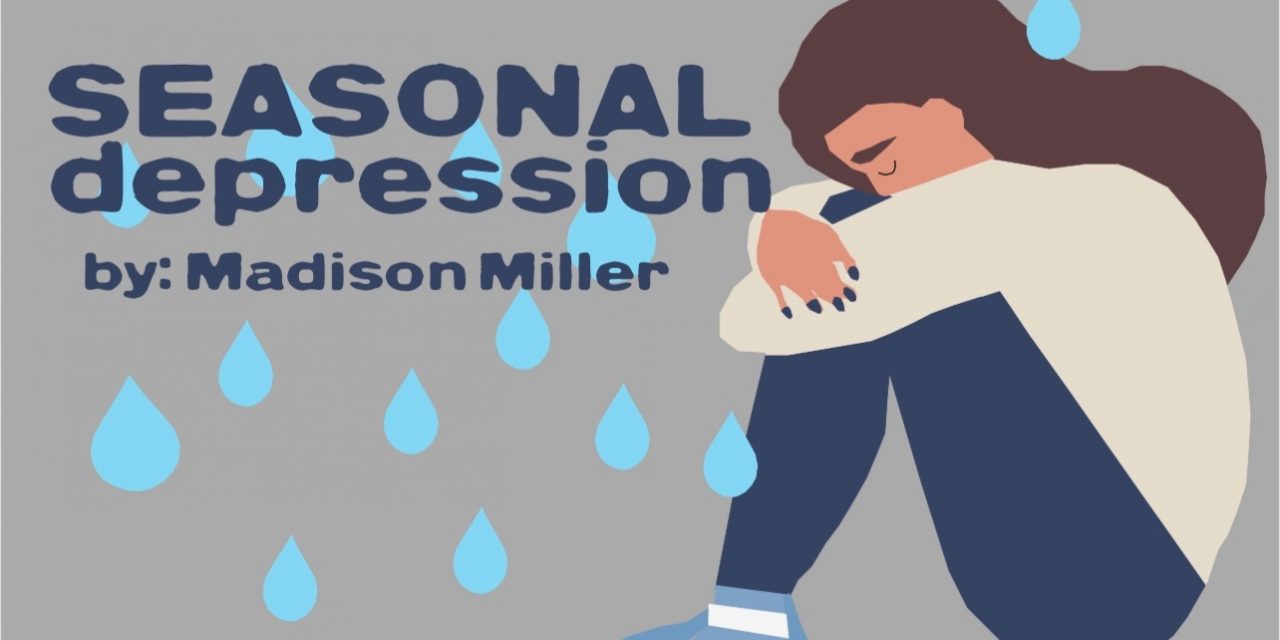Seasonal Depression
Madison Miller | Writing Contributor
The holiday season is a time filled with fun, family gatherings and gifts. Yet, after the holidays many people feel the winter blues. Between the colder weather and earlier sunset, Seasonal Affective Disorder (SAD), also known as seasonal depression can become present in many people’s lives, especially in young adults, especially women. During the winter months, people can also often feel more isolated than normal, causing serotonin levels to drop.
But are the winter blues the same as SAD? In short, the answer is no but there are similarities. Winter blues can be experienced specifically during the winter months, due to a lack of Vitamin D. According to Very Well Mind, SAD can be experienced in other seasons, not just the winter. Most people who experience SAD are between the ages of 20 and 30 years old, whereas the winter blues can affect any age.
To understand SAD and help how you may be feeling this winter let’s dive a little deeper into symptoms and remedies.
What Is Seasonal Depression (SAD)?
An article by the Cleveland Clinic says Seasonal Depression is a type of depression that changes in seasons, usually when fall starts. This seasonal depression gets worse in the late fall or early winter before ending in the sunnier days of spring.
Seasonal Depression is more frequent in people who already suffer from mood disorders and who have mental health issues. Seasonal Depression combined with mental health issues can often send people into a dangerous downward spiral. SAD can also be hereditary, so it’s important to have an understanding of your family’s mental health background.
Symptoms Of Seasonal Depression
Seasonal Depression can change your personality and negatively affect your personal relationships. It is important to identify SAD and begin to manage symptoms. An article by John Hopkins Medicine says that common symptoms such as “increased sleep and daytime drowsiness, loss of interest and pleasure in activities formerly enjoyed, social withdrawal and increased sensitivity to rejection, irritability and anxiety, feelings of guilt and hopelessness” can be felt when suffering from SAD.
How To Combat the Winter Blues and SAD
Anna Benetollo, a freshman at The University of Alabama majoring in environmental engineering, uses a couple of different tricks to stay in a positive mindset during the winter months.
“I like to hang out with my friends and watch reality TV,” says Benetollo. “My major can be overwhelming, so I try to focus on ways to stay happy.”
Benetollo says she likes to be outside and exercise. She participates in club boxing, which gives her a strong sense of community.
People who experience seasonal depression can find ways to decrease their symptoms by:
- Getting into a routine to help you stay focused and organized on the tasks on hand.
- Setting goals that you are able to achieve and working to accomplish them.
- Not burying your emotions.
- Opening yourself up to new and old people in your life, in order to avoid isolated emotions.
- Spending more time outside or taking Vitamin D
- Being open to new activities and hobbies.
- Some easy hobbies to get into are drawing, photography, dancing, cooking, baking, painting, singing, etc.
- Looking into therapy sessions.
There are many ways to protect yourself from the winter blues and seasonal depression. It is important to know what seasonal depression is and to be aware of the symptoms to protect yourself from it. This winter should be spent protecting your peace and following the steps above to maintain your physical and mental well-being.
Madison Miller serves as writing contributor. She is a freshman, and this is her first year with Alice. An Alabama native, she enjoys reading, art, and treating her dogs like humans.




